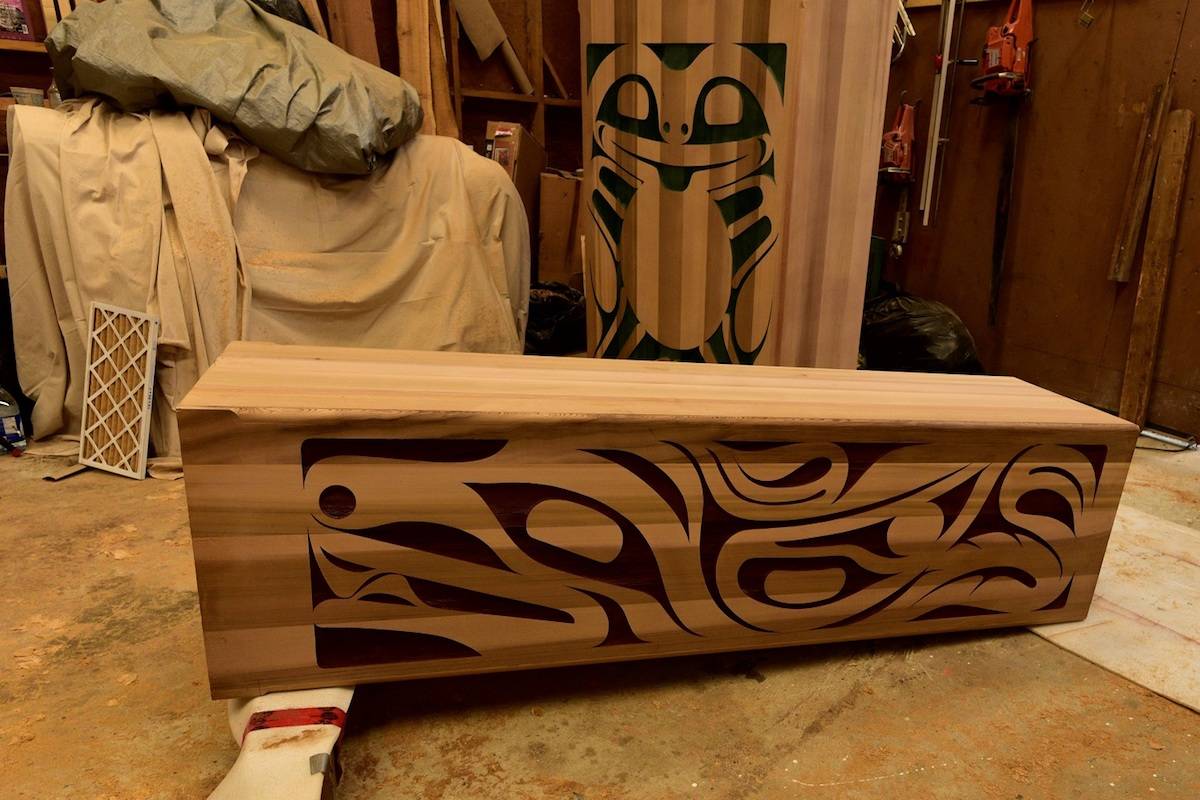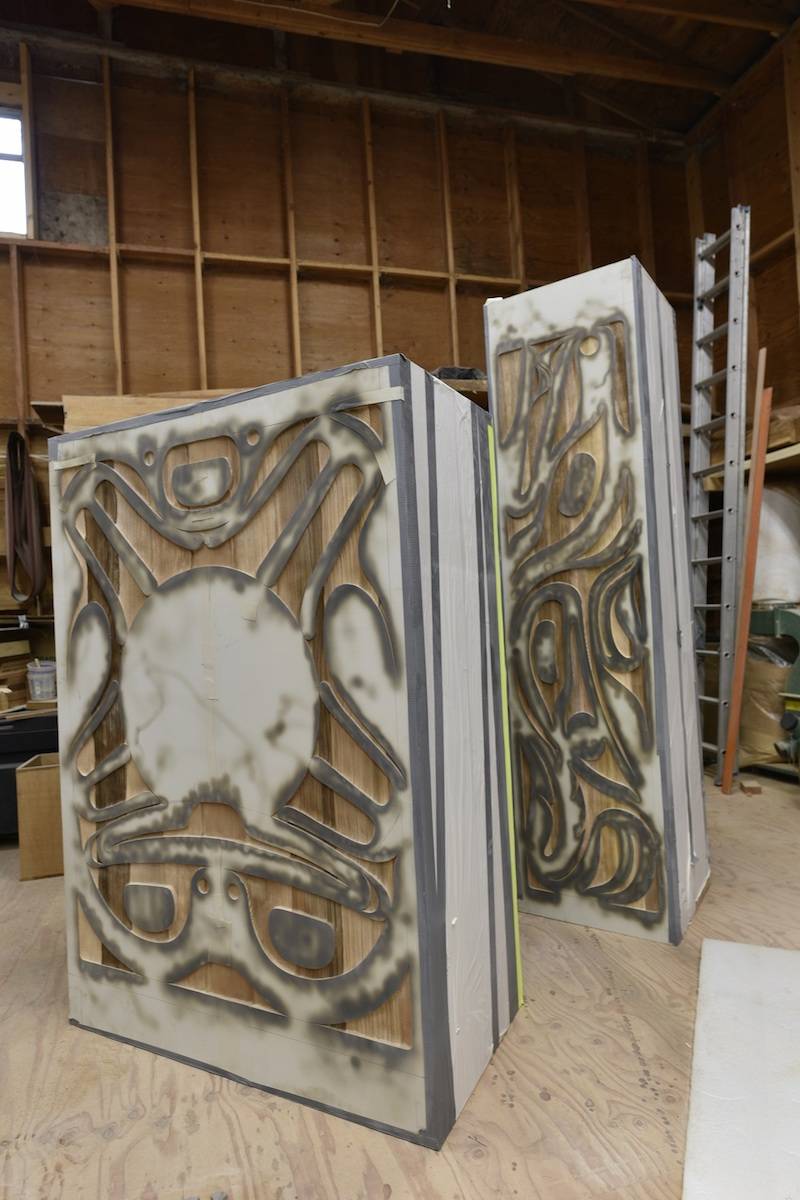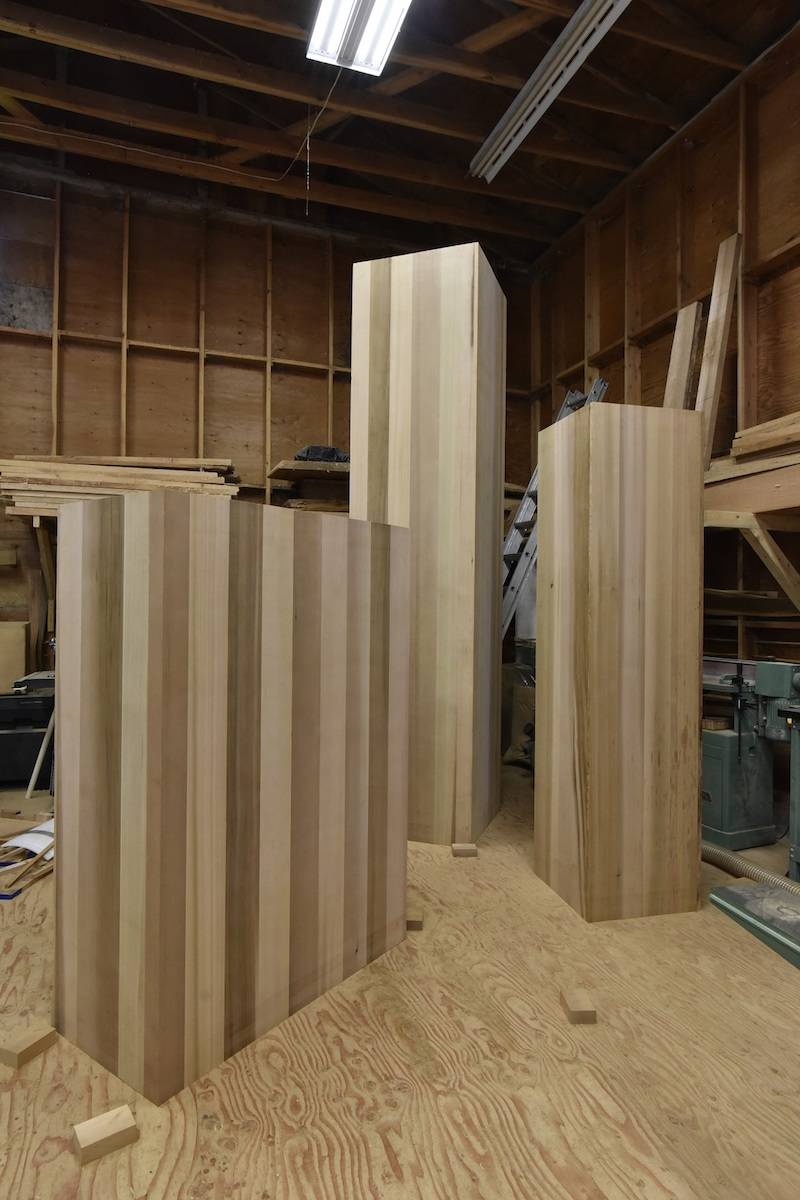The Peninsula artist who created the nationally lauded Witness Blanket is close to unveiling his latest piece of work, which aims to “make music for the earth.”
Coast Salish artist Carey Newman is known for his evocative artworks, which have been applauded for eloquently contributing to the national conversation on First Nations’ history. His latest work, a set of three large drums, was designed to contribute to reconciliation and healing, as well as drawing attention to growing environmental threats. The huge drums, one 12 feet tall, will be installed at the Cedar Hill Recreation Centre in late August.
ALSO READ: Boat strikes responsible for East coast whale deaths – what’s causing B.C.’s whale deaths?
“I came up with this concept, which I call earth drums, and the idea is to change people’s relationship with land,” says Newman. “When you play them there is a sound we hear, as humans, but there is also a sound that resonates below human hearing. They are designed to be played with the hand, but in engaging with them, the user is actually making music for the earth.”
Players will be dwarfed by the huge drums, which incorporate ornately carved wolf, frog and raven symbols. The animals were chosen to represent the land, water and air, as well as holding individual significance in Indigenous culture.
Traditionally, the wolf is a teacher figure, representing family and guardianship. The frog is often the first figure on a totem-pole, known as the Speaker or “the one who brings the message.” The mischievous raven is known as a creative trickster.
ALSO READ: Educators told to teach more Indigenous lessons – what does that mean in practice?
The earth drums have taken seven months to create, but Newman is known for his ambitious projects. The Witness Blanket is a 12-metre-long exhibit that forms a patchwork, containing 800 objects, largely taken from residential schools. It bears witness to the traumatic events those institutions represent for Indigenous peoples.
Newman has strong beliefs about property and ownership.
The Blanket was recently transferred to Winnipeg’s Canadian Museum for Human Rights and was subject to a novel agreement, where instead of being called a loan, both Newman and the museum agreed to “jointly care for it in mutual respect,” and that no one was deemed to own it. Similarly, Newman says his drums contribute to reconciliation partly by challenging users to re-evaluate their approach to the earth.
ALSO READ: Human Rights museum to restore Coast Salish artist’s Witness Blanket
“Reconciliation is about land,” he says. “If we only look at land as property then it is a possession, and if it’s then a possession it is a resource or commodity. We should be looking at it more as having a relationship, because we are all affected by the harm we cause to the land. It means all of us changing how we think about, interact with and consume land.”
The piece will be installed sometime in late August and will be open to the general public to play. Newman says he is intrigued to see how the piece will be used, either played by a quick individual or by groups.
For more information on Newman’s Witness Blanket visit witnessblanket.ca.



